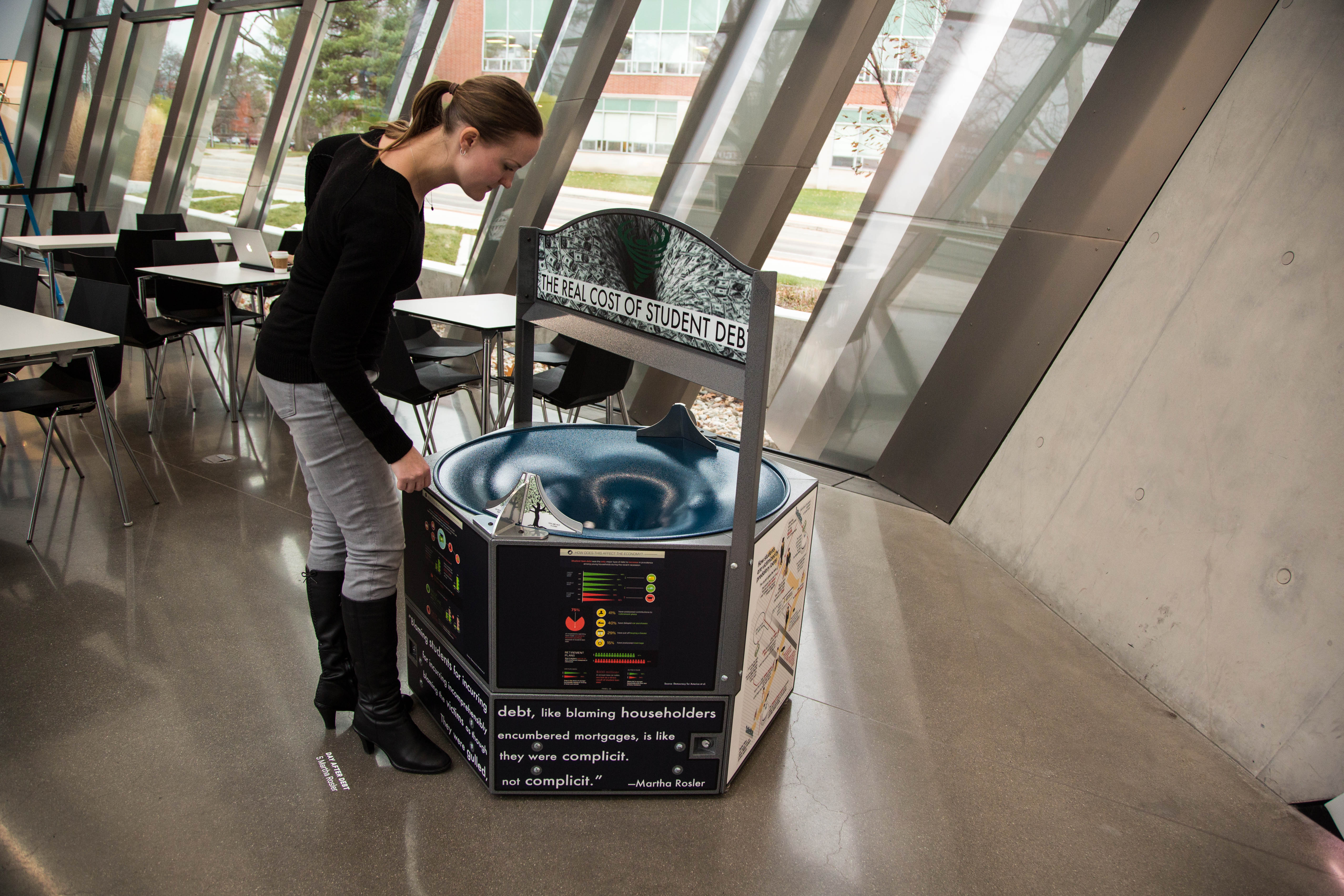You have /5 articles left.
Sign up for a free account or log in.
During a meeting two years ago to brainstorm a collaborative project, Ahmet Oğüt and two artist colleagues wanted to find a topic that addressed one of the most urgent current issues in the U.S. They landed on debt -- specifically the mammoth, more-than-trillion-dollar sum held by those who borrowed money for college.
“Day After Debt: A Call for Student Loan Relief" is about the demand for higher education, the related growth in student debt and the pressures that puts on graduates. The exhibit opened last month at the Eli and Edythe Broad Art Museum at Michigan State University and is presented in cooperation with the art organization Protocinema.
The project aims not only to raise awareness about the student debt burden in the U.S., but also to help chip away at it. Each of the six pieces collects money that will be given to Debt Collective, an advocacy group that organizes projects around reducing student debt.
Oğüt’s contribution to the exhibit, called "Anti-Debt Monolith," is a large, solid black box modeled after the mysterious object built by an extraterrestrial species in Stanley Kubrick’s famous film “2001: A Space Odyssey.” Oğüt liked the simplicity of the box and the legend behind it, and he designed it to play coin-operated audio recording speaking about the growth of student debt in the past 10 years.
Other pieces include bricks full of shredded American currency and a transparent plastic shopping bag with spending levels tied to ironic and humorous names that praise the person giving money as, "you are a friend" and "you are an angel."
Oğüt, a native of Turkey, was familiar with the complications of student debt from friends who’d studied in the U.S., but he started the project by meeting with activists and artists' groups to learn more about the issue and talk over ideas.
He knew early on that he wanted the pieces of the exhibit to raise funds to help alleviate debt.
“My interest is how we, as artists, can do something effective that lasts long-term,” Oğüt said
Eventually, he teamed up with mission-driven art organization Protocinema, which brought the Broad Museum on board and helped to get the other works produced. Protocinema is based in Istanbul and New York, and for founder Mari Spirito, it was interesting to see Oğüt, a non-American, looking at the student debt issue in the U.S.
Americans have been living in this environment of student loans and expensive higher education for so long that it’s starting to become normalized, Spirito said. That’s why it’s important to draw attention to the issue, to remind everyone that it’s not normal.
The student debt burden also mirrors a wider debt problem worldwide, she said.
Observers of the pieces can participate in the art campaign by putting change into one of the sculptures, and slowly, collectively, working to reduce student debt, Spirito said. The money from the sale of any of the artwork will also go toward debt reduction efforts.
It’s fitting that the exhibit opened at the Broad Museum, with its ties to a university where the topic of student loans is so prevalent. But in the future, Oğüt hopes the pieces will be displayed in a variety of public spaces, including libraries, airports or hospitals.
“It’s not only about students who are studying currently,” he said. “It’s about anybody who’s dealing with this debt for the rest of their lives. The issue should become public and not only be seen in universities and art museums.”
Right now there are six artists with pieces that were specifically commissioned for the exhibit. Oğüt hopes other artists will be interested in designing similar works with the same driving idea that any profit is donated to Debt Collective.
 Debt Collective launched earlier this fall as a spinoff of Strike Debt and the Rolling Jubilee project, which raised money to buy back debt. Now, the group is switching gears to challenge creditors and the government about the way education is funded, said Laura Hanna, of Debt Collective, said.
Debt Collective launched earlier this fall as a spinoff of Strike Debt and the Rolling Jubilee project, which raised money to buy back debt. Now, the group is switching gears to challenge creditors and the government about the way education is funded, said Laura Hanna, of Debt Collective, said.
Another piece of the Day After Debt collection, designed by Danish art collective Superflex, gives a different meaning to the graduation cap, Spirito said.
Graduation caps used to be a symbol of hard work and great future potential, she said. In this piece, the cap is flipped upside-down to be used as a panhandler’s collection box.
“It turns around the ideals that we have in our head of what a graduate is,” she said. “A graduate is now somebody who has to beg for money to survive.”








